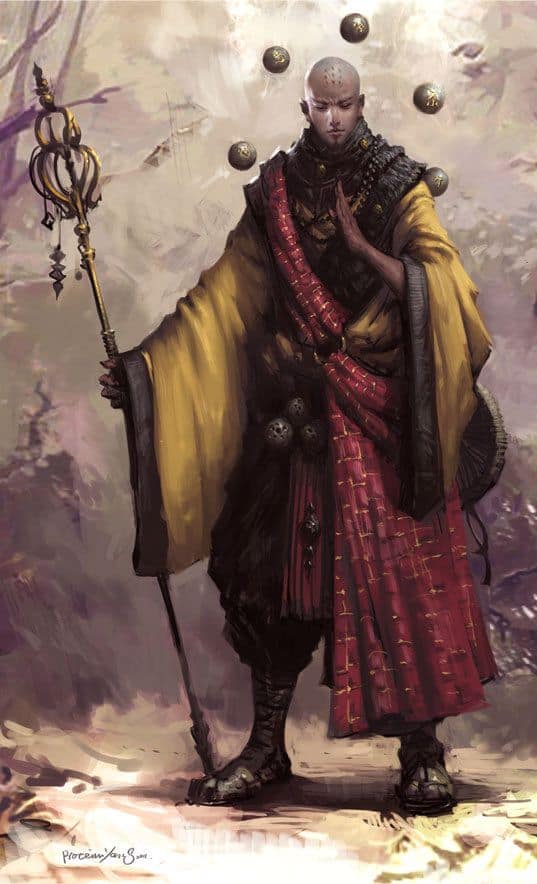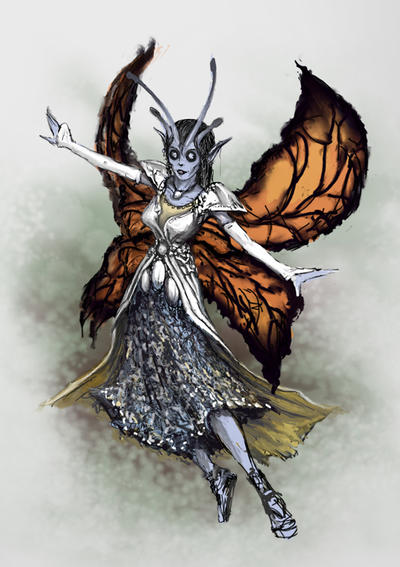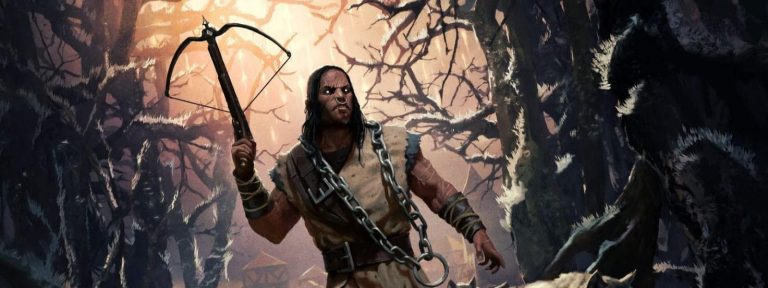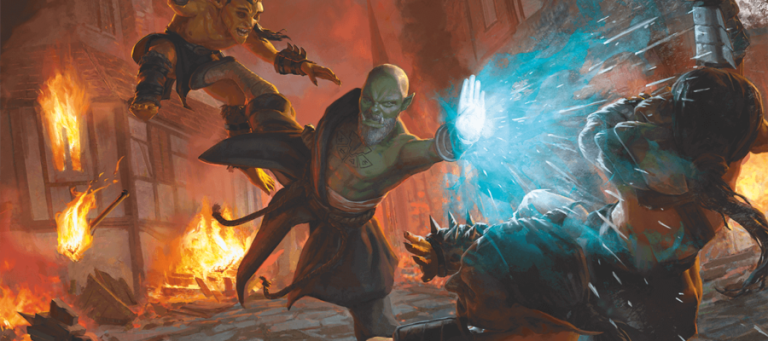D&D 5e: Circle of Dreams Druid Guide

D&D 5e: Circle of Dreams Druid Guide
Role in the Party
The Feywilds have long-bound ties to the deepest natural places and the shepherds and guardians of the liminal spaces between are Druids from the Circle of Dreams.
Combining the usual Druidic aptitudes for powerful magic with a strong thread of healing, Druids who follow this path are as comfortable raining fire on their foes as they are mending the wounds, and minds, of their allies after a grueling day. While everyone is relaxing, safe and sound, in a camp protected by the Druid’s fey trickery, of course.
This guide breaks down the Circle of Dreams subclass for the Druid. Effective builds, feat choices, multiclassing options, and more.
Epic
Good
Meh
Bad
The Circle of Dreams Druid subclass is found in Xanathar’s Guide to Everything. Click here to pick up your own copy of Xanathar’s Guide to Everything!
Circle of Dreams Features
Balm of the Summer Court: From 2nd level, the Druid becomes a fount that healing energy just springs from. The character gains a pool of d6s equal to their Druid level.
As a bonus action, the Druid can spend up to half their total amount of these dice to heal an ally within 120ft. The ally also gains 1 temporary HP per dice used. All dice come back after a long rest.
This is Healing Word, except it’s free, with a much longer range. It’s also, importantly, not a spell, so can be used in the same turn that the Druid casts a leveled spell.
Combining good scaling, a lot of healing without eating spell slots, and not preventing the Druid from keeping its main role of full caster, this is a decent little ability, which is good because it’s the main benefit of the subclass.
Hearth of Moonlight and Shadow: From level 6, whenever the Dreams Druid rests, they can create a 30ft radius sphere of faerie protection. This provides +5 to Stealth and Perception checks to the Druid and their allies and also mask the light from sources like torches and campfires inside the sphere. (It doesn’t mention masking other things though. Like campfire smoke. But don’t tell your GM that.)
This is … fine. The bonus to Stealth is whatever because unless the party has been covering their tracks enemies can just follow them right up to the campsite. +5 to Perception on the other hand is a very solid buff and helps with not getting jumped during short rests.
The ability also does nothing to protect the party. Tiny Hut, the closest equivalent, is a ritual spell that’s impervious to anything not another reasonably high level Wizard. But if an enemy finds you inside this, tracking you through magical or mundane means, nothing is stopping them from just walking up and murdering you in your sleep.
This is an ability I want to like more, but all of the little issues just make it so difficult to do so.
Hidden Paths: From 10th level, the Druid can spend a bonus action to teleport up to 60ft to a space it can see, or can touch a willing target to send them up to 30ft instead. Uses scale with WIS modifier, and comes back on a long rest.
This is just Misty Step, for you or a friend. Even though that’s slightly disappointing, it is a very useful ability. As a full caster, the Dreams Druid probably isn’t going to put itself in danger more than a handful of times per day, so up to 5 daily escape buttons is great. This can also be used to launch party members straight into the fight, or as a movement tool, too, saving important spell slots.
Walker in Dreams: At level 14, the Dreams Druid can finally do what its namesake suggests, and walk through the dreams of others.
After taking a short rest (specifically short, too. No long rests here.) The Druid can cast one of three spells:
-
Dream: This is mostly just fluff, though it does play into the archetype of the class, and could be useful in campaigns with a lot of travel or social back and forth.
-
Scrying: Gives the ability to look at a place or creature for 10 minutes. Unwilling creatures get a save, but there are ways around that. This is fun and can offer a lot of knowledge if the party has downtime where the Druid can take multiple Scrying rests.
-
Teleportation Circle: Now we’re talking. The circle created by this spell doesn’t link to another, as normal. Instead, it links to the last place the Druid long rested. Is the day going poorly? Blink out of the dungeon to the nearby inn you slept in. Sent halfway across the world by a wizard on a quest? Come straight back that night.
These spells require no spell slot or material components, which is good as two of them have costly components required to cast. Realistically, most campaigns are only going to see repeated use of the teleport, but if your adventure allows the space for scrying, increase the rating accordingly.
Strengths
The single biggest strength of the Circle of Dreams is how well it supports a party. It’s a caster, first and foremost, and the base Druid spell list is jam-packed with effective damage dealing options, debuffs and area control spells, and multiple strong summoning spells.
The subclass builds onto that by offering a bonus action heal that isn’t a spell, meaning that this is one of the few classes that can cast a pseudo-Healing Word in the same turn that it throws out one of its highest level spells. And it can do it again and again, multiple times per day.
Later levels bring a lot of mobility, again linked to bonus actions, that can get the Druid out of trouble, or their allies into it. This, plus thematic, free spellcasting, and protection when resting is a wide-ranging list of buffs.
A Druid of Dreams is still a Druid, too. That means lots of utility outside of combat, including decent cantrips, ritual casting, and Wild Shape, all of which can contribute to a successful adventure.
But the Circle of Dreams is happiest when it’s working alongside others. What this class wants to be doing is standing at the back, behind a full party of damage dealers. Its spells will pin enemies in place and weaken their resolve, while any allies that risk dying are quickly brought back to fighting strength.
Weaknesses
The biggest problem with the Dreams Druid is that it just doesn’t do enough. Two of its subclass abilities are going to be useful to any character, it’s true, but are just copies of existing spells. That’s fine, but it’s also dull.
The rest of the abilities on offer are either situational or straight underpowered. Hearth of Moonlight and Shadow is badly thought out, with multiple holes in its defense, and it’s simply worse than the two spells that most parties rely on for safe short and long rests. That’s incredibly disappointing, especially as it’s the only thing the class gets at level 6.
Walker in Dreams is similarly underwhelming. While the spell list is thematically appropriate, there’s not a lot of space for two thirds of what it does in a lot of campaigns, especially in the Adventurer’s League. This means that the ultimate ability of the Circle of Dreams boils down to being a glorified taxi service.
The Circle of Dreams is still a Druid, and still has access to fully powered spells. But that’s mostly what it is. A spellcaster. Other Druids have access to summons, more spells, or a bestial or corrupting form. For most of its levels, the Circle of Dreams just casts their spells and heals a little bit more than usual.
Best Race Options
Fairy: The Circle of Dreams is all about Fey, so why not be one? Variable stats, a whole mess of Druidic spellcasting, but the big draw is constant flight. The ability to soar above the battlefield is incredibly powerful, and keeping the relatively squishy Druid away from its enemies where it can rain down damage and healing spells with impunity is incredibly powerful.
Wildhunt Shifter: Great stats, proficiency in a good skill, Darkvision, and a once per rest ability to shift as a bonus action into a more predatory form which grants temporary HP, Advantage on WIS checks, and denies enemy Advantage against the character, all of which is great.
Water Genasi: Decent stat spread, a swim speed and the ability to breathe water, Acid damage resistance, and some bonus spellcasting with situationally useful spells is a solid little group of things to have, especially in a seaborne campaign.
Choosing the Right Skills
The Druid relies on its spell list and class abilities to do the heavy lifting in most situations. Only having 4 skill slots is a big limit, so it’s important to take skills that are going to be useful.
Perception is the obvious choice. The Dreams subclass offers bonuses in the skill, but even if it didn’t, it’s the most used skill in the game and relies on WIS, which Druids are going to have a high score in.
Survival is a classic druidic skill, and Insight gives the character something to do in social situations. Both also scale with WIS,
Round out skill selection with Athletics, or a knowledge skill like Nature or Arcana.
Fitting Feats
Metamagic Adept: As a primary caster, the Dream Druid needs to get the most mileage out of its spells as it can. Metamagic is one way to do that. Careful spells let Druids drop their big control spells without affecting their allies. Transmuted Spell changes damage types to blast through resistance. Even features like Subtle spell can help in social situations.
Alert: A primary caster needs to go first so it can drop a big damage or control spell in round one. +5 to initiative, immunity to surprise, and bonuses against invisible creatures are all a great set of abilities.
Shadow Touched: Learning Invisibility, a handy spell the Druid normally doesn’t have access to, plus another spell from the Illusion or Enchantment schools, is a good use of a feat for a character that’s designed to be a primary caster.
Optimal Backgrounds
Outlander: Two solid skills, a language, and a musical instrument for leading rituals in the wilds. All things fun, flavorsome and good to have.
Archaeologist: Two good skills, a choice from one of two tools that are useful for adventuring, and a language, is a nice spread of good things.
Hermit: Two WIS based skills, Herbalism Kit tool proficiency, and a language. All of it vaguely Druid-y, most of it useful.
Multiclassing Options
Order Cleric: Voice of Authority is an amazingly powerful tool for a support caster, allowing allies to spend a reaction to attack if the Druid targets them with a spell.
Access to the Cleric spell list, which is cast using the same stat, as well as proficiency in a skill for free is a great package for a 1 level dip.
Fey Wanderer Ranger: Fitting the theme, the Fey Wanderer turns the Druid into more of a combat character. Bonuses to weapon damage, some extra spells that the Druid doesn’t get access to, and the ability to use WIS on every charisma skill are a decent deal.
Be aware that every level takes away from the core identity of the build, and it’s easy to diversify too much and leave the character feeling toothless, so take at least 5 levels of Druid first.
Arcane Trickster Rogue: This is a pure 1 level dip for Sneak Attack, skill proficiencies, and Expertise in two skills.
More levels offer Cunning Actions, and if taking this further, Arcane Trickster for access to the Wizard spell list and not eating into spell progression too much is the play.
Would I recommend playing a Circle of Dreams Druid?
The Circle of Dreams isn’t the strongest Druid subclass. It might be close to being the weakest, mechanically. Most of the things that it does also aren’t particularly unique, especially compared with other Druid Circles, which can offer powerful AOE buffs, damage dealing summons, or simply just turn into a bear to tear their enemies limb from limb.
But that doesn’t mean the subclass is bad. It just has limitations. The healing power and mobility on offer from abilities are both very good, and neither uses resources that eat into the Druid’s spell slots or major action economy. This means that the Circle of Dreams can be built into a useful backline caster, calling on the Druid’s reliably powerful spell list and its abilities to keep the rest of the party fighting at peak effectiveness.
Is this the best Druid subclass? No. Does it feel bad to play? Also no. You can definitely have fun dancing in the Summer Court of the Fey. It just might be worth considering if one of the other subclass options on hand fits your build and character idea first.









